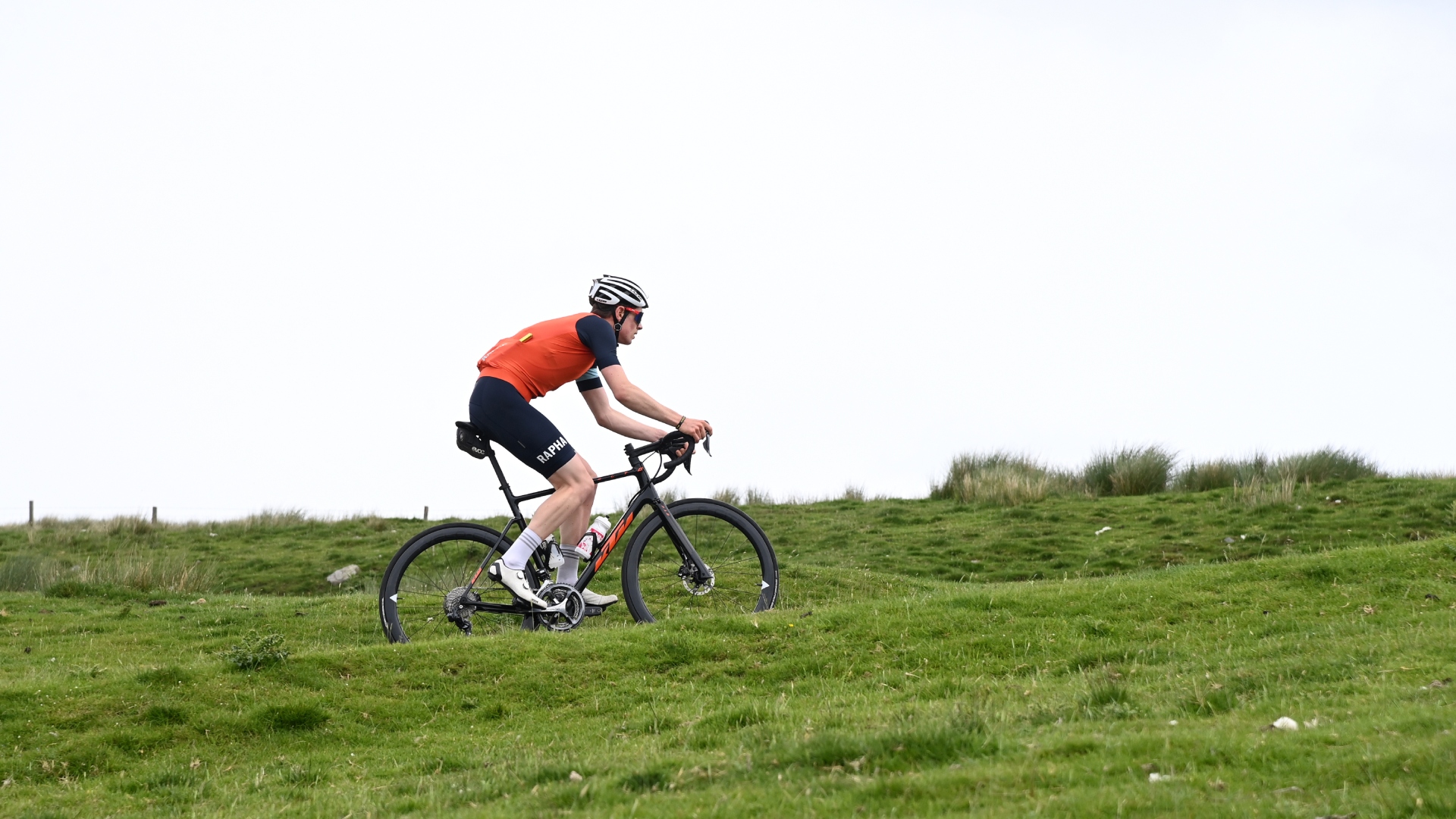How to get faster on false-flat climbs and increase the average speed of your rides
Draggy hills aren’t the most inspiring terrain, but they are quite unique in proving a challenge to both lightweight climbers and heavier-set powerhouses - here’s how all riders can improve


Love them or (in this case), hate them, those long draggy false flat climbs offer a unique challenge. Not steep enough to benefit from being a lightweight climber, and a little too slow to really benefit from aerodynamics. This means that some riders simply really struggle with them.
Here are our top tips to be able to improve performance on this type of terrain:
If you are someone that naturally prefers the climbs
If you are a climber, then it’s most likely your ability really push some power that is holding you back on false flats. We often talk about power relative to body mass (W / kg) when talking about climbing but as the road flattens, we should really be looking at power relative to aerodynamic drag (W / CdA). Typically, climbers are of a smaller build and therefore produce less absolute power even though their smaller build might mean they are naturally slightly more aerodynamic that their bigger competitors. However, the differences in aerodynamics are normally enough to make up for the lack of power. Simply put on false flats climbers miss absolute power.
Your ability to produce absolute power is limited by how much sustainable force you can produce rather than how quickly you can turn the pedals. Most good cyclists will only use a small range of cadences (80-95 rpm) but the force they can sustain will vary considerably between cyclists.
To produce more power on the false flats, climbers will need to be able to produce more force. Therefore, adding some force production work; training at high power outputs with lower cadences might be beneficial. For this group, I would suggest doing this on less steep gradients and on the flat, and not dropping the cadence too low. Simply riding at or above threshold power one to two gears harder than normal should offer a good stimulus.
The other thing this group can think about is riding in a more aerodynamic position. Climbers typically adopt a posture on the bike that allows them to maximise power at low speeds. Therefore, training to hold a more aerodynamic position as the speed increases will offer up benefits in terms of power relative to drag. This will not only help on the false flats but on the flat as well.
If you are someone that naturally prefers the flat
If you are someone that excels more on the flat, then when the road turns upwards the opposite applies. You probably have very good power relative to your aerodynamic drag but not to your body mass. Therefore, for these riders, it might be worth incorporating more hilly rides into your training and looking to lose a little bit of weight. This will not only offer up benefits on flat flats but will improve your climbing on all gradients.
The latest race content, interviews, features, reviews and expert buying guides, direct to your inbox!
For these riders, it’s also key that they don’t stop doing what they are good at. These riders are typically very good at adopting an aerodynamic position on the bike and may abandon this as the gradient increases. However, that’s probably the worst thing to do – instead, it's far better to practice holding that aero position on steeper and steeper gradients as even at relatively low speeds there will still be a benefit.
So there you have it, how you might need to adapt your training to improve performance on false flats all depends on what you are good at to start with. Follow these tips to make small changes to your training and hopefully, you will see your improvements on those pesky false flats improve. Soon enough it’ll be your mates suffering behind you rather than the other way around.
James Spragg is a sports scientist and coach, working both in research and applied settings. When not working with athletes James can be found skiing, climbing, cycling or drinking coffee!
Alongside Dan Lorang and Peter Leo, James runs Intercept Performance Consultancy. Over the last 8 years in various roles, as coaches, performance consultants, performance managers, and sports scientists, Dan, James and Peter have played a role in helping athletes achieve more than 10 World Championship titles, several Olympics medals (including a Gold and Silver Medal in Tokyo 2020) and several Top 5 results in some of the biggest sporting events on the planet (Tour de France, Olympics, World and European Championships). Our single focus is on improving performance in all settings.
